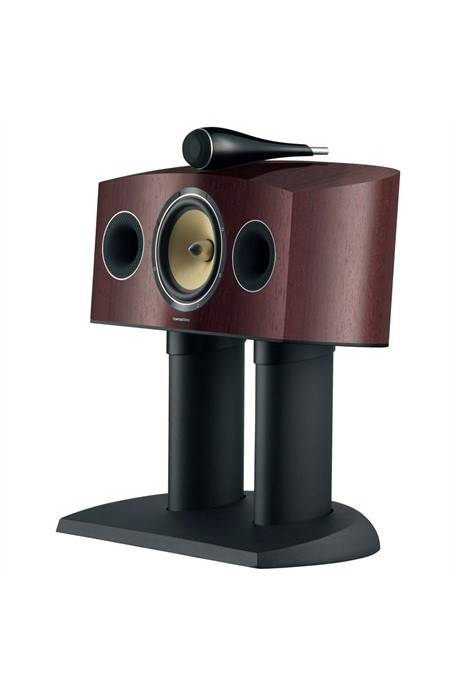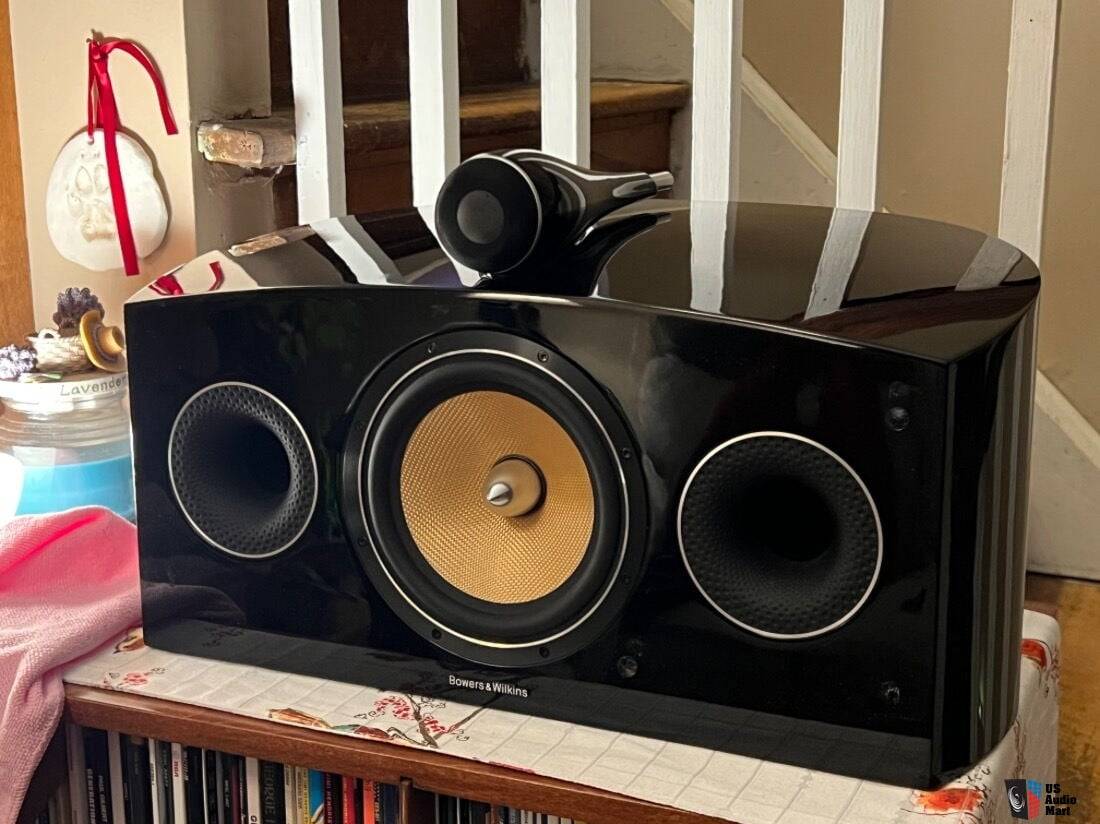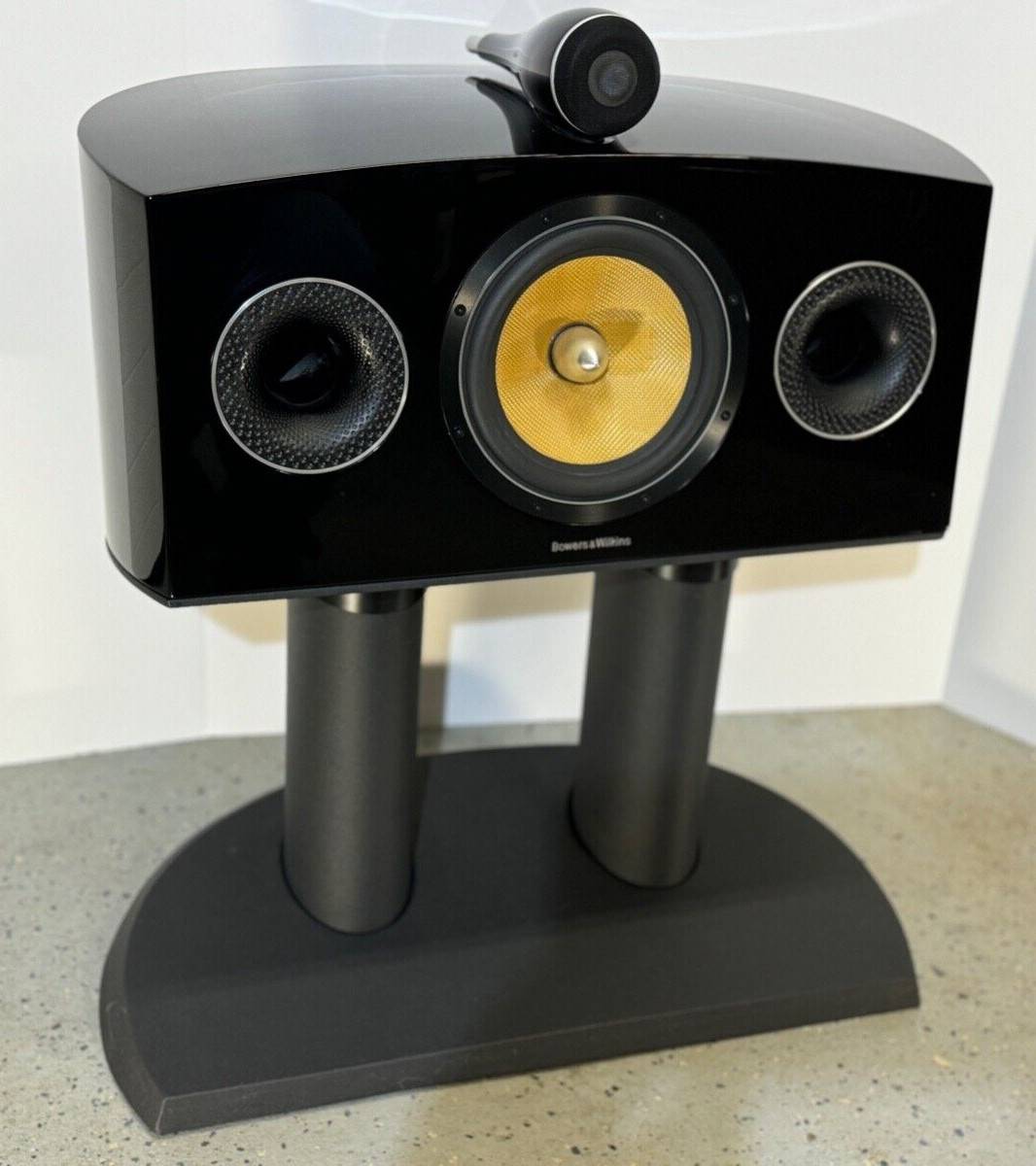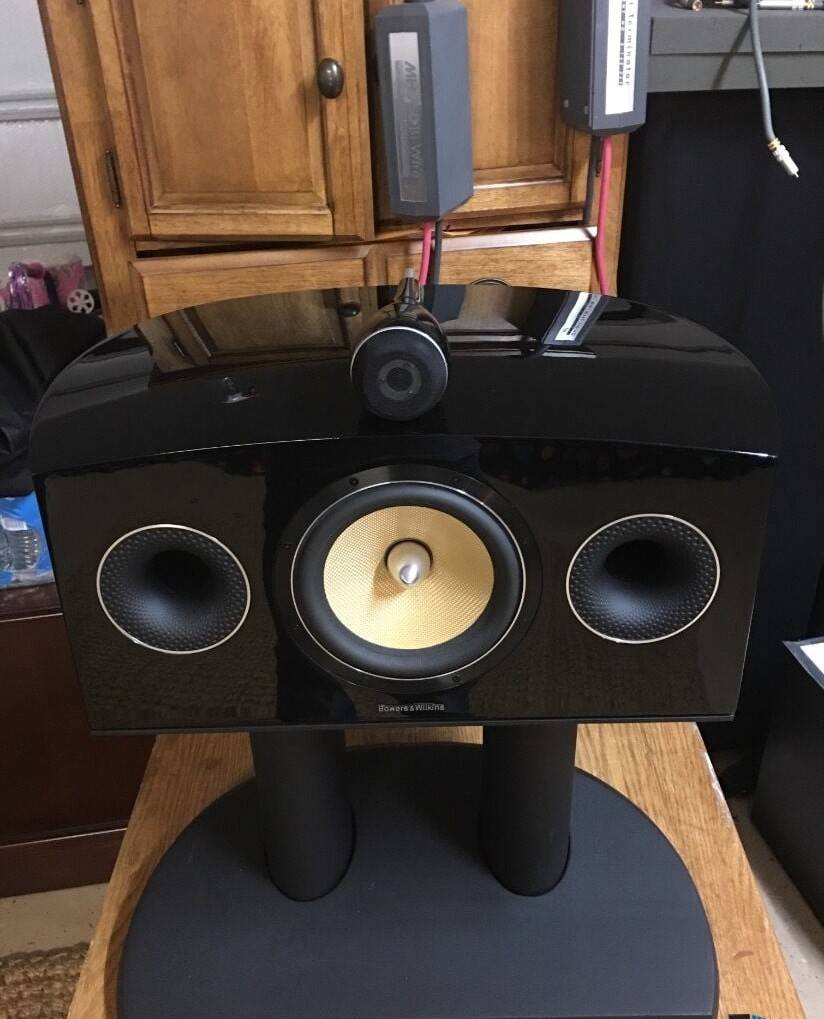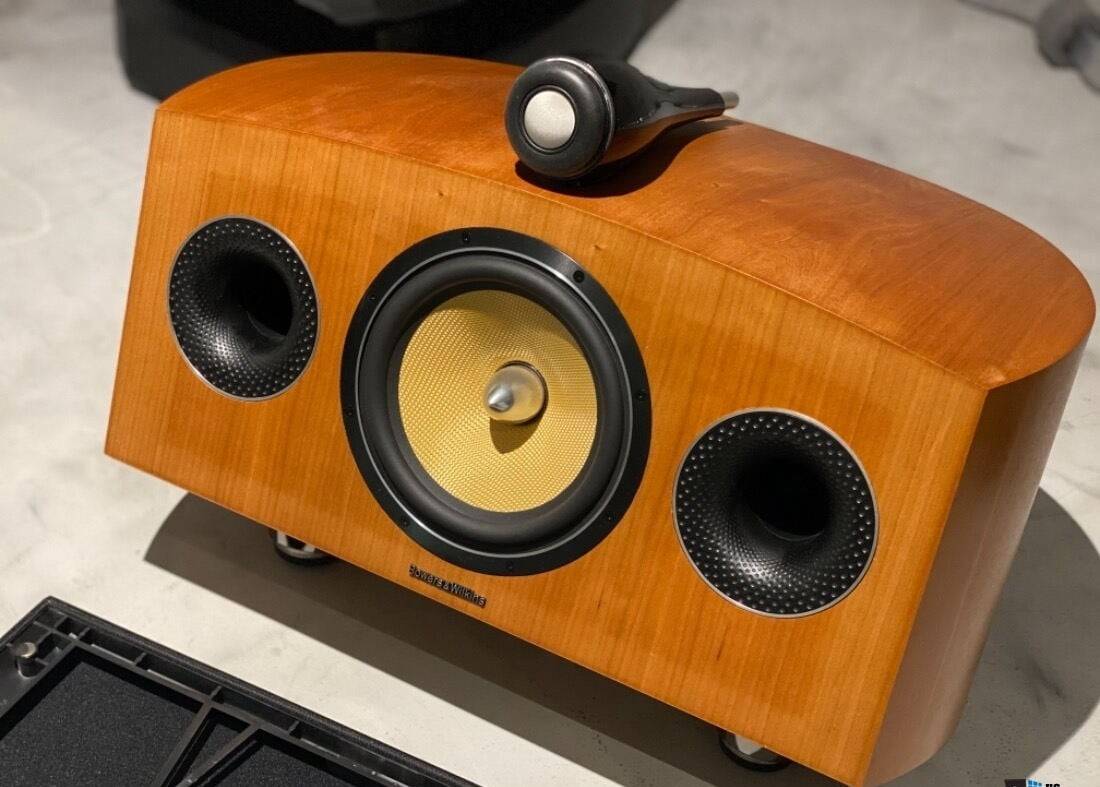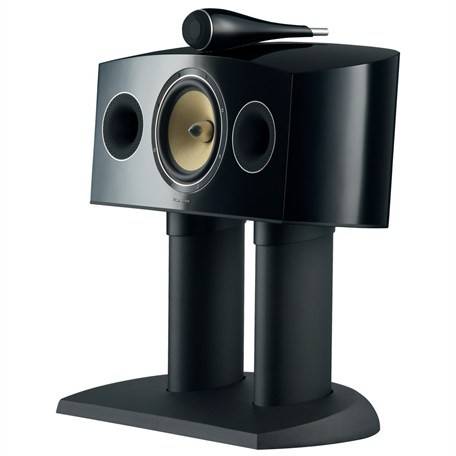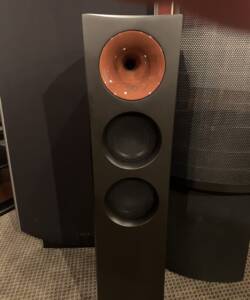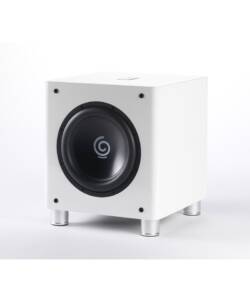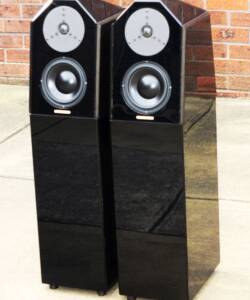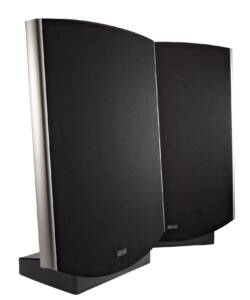B&W HTM4 Diamond Centre Speaker (Cherry)
Original price was: R70,000.00.R26,000.00Current price is: R26,000.00.
HTM4 Diamond
(Optioinal Floor Stand Available as shown in illustration above)
The greatest movie performers don’t always have the greatest stature. Think Al Pacino and Mel Gibson for starters. Perfect for smaller viewing areas, the compact HTM4 Diamond centre-channel speaker will seamlessly balance the sound in an 800 Series Diamond home theatre set-up, thanks to highly advanced, complementary technology like a Kevlar� bass/midrange driver and ? for the first time ever ? a diamond dome tweeter unit.
2-Way centre speaker
- Drive units: 1x �25mm (1 in) diamond dome high-frequency, 1x �165mm (6.5 in) woven Kevlar� cone bass / midrange
- Frequency range: -6dB at 42Hz and 33kHz
- Frequency response 49Hz – 28kHz �3dB on reference axis
- Dispersion: Within 2dB of reference response
- Horizontal: over 60� arc
- Vertical: over 10� arc
- Sensitivity 88dB spl (2.83V, 1m)
- Harmonic distortion 2nd and 3rd harmonics (90dB, 1m),
- Nominal impedance 8? (minimum 4.7?)
- Crossover frequency 4kHz
- Recommended amplifier power 50W – 120W into 8? on unclipped programme
- Max. recommended cable impedance 0.1?
- Dimensions (H x W x D): 279mm (11 in) x 486mm (19.1 in) x 287mm (11.3 in)
- Net weight 12.5kg (27 lb)
- Cabinet finishes: Cherrywood, Rosenut, Piano Black Gloss
- Grille: Black cloth
Description
B&W 805 DIAMOND AND HTM4 SPEAKERS SPECIFICATIONS
- Design: 2-way, Ported Enclosure
- Drivers: One 1″ Diamond Dome Tweeter, One 6.5″ Kevlar Mid/Bass
- MFR: 48 Hz – 28 kHz ± 3 dB (-6 dB at 42 Hz and 33 kHz)
- Sensitivity: 88 dB (2.83V, 1m)
- Nominal Impedance: 8 Ohms
- Recommended Amp Power: 50W – 120W
- Weight: 805D: 26 Pounds/each; HTM4: 27 Pounds
- MSRP: 805D $4,999/pair; HTM4: $2,499 USD
- B&W
- SECRETS Tags: B&W, Speakers, Bookshelf Speakers, Audio
The Design of the B&W 805 Diamond and HTM4 Speakers
The 805D bookshelf and HTM4 center are the smallest members of B&W’s flagship 800 series line. The 800 series encompasses speakers across a wide range of price points, from the $5000 805D’s to the $24,000 flagship 800D tower speakers. Despite being the least expensive entries into the line, the 805D and HTM4 share many characteristics with their larger (and more expensive) cousins.
My shipment from B&W came in 5 boxes, which included the speakers packaged separately as well as matching stands for both the bookshelves and center. I took to the task of unpacking the 805D’s first.
As I lifted the 805D out of its travel home I was immediately struck by two things. The first is build quality. All of the members of the 800 series are hand built in B&W’s facility in Worthing, West Sussex, and the speakers exude the kind of craftsmanship one would expect would come out of the home office. This is an astoundingly solid speaker, with surprising heft for its size, weighing in at a solid 26 lbs each. Every detail, from the speaker posts, to the magnetic grill seems accounted for.
The second thing that can’t be overlooked: these are one hansom set of speakers. B&W sent all three speakers in piano black, and while I’m not one to necessarily be won over on looks alone, there is no denying the units themselves certainly won’t have any issue passing the aesthetics committee.
The HTM4 is shares all of these same characteristics with the 805D’s. It’s solid, impeccably built, and looked terrific sitting on top of my Bello Mirage stand.
Instead of running down all of the build characteristics of the HTM4 and 805D, I’ll just throw you some of the highlights; the B&W website and 800 series brochure walk through all of the specifics of these units.
As I said above, the HTM4 and 805D’s share many of the same characteristics as other members of the 800 series, the most prominent of which might be the floating diamond tweeter perched on the top of the cabinet.
Briefly, B&W had identified diamond as what it believes is the ideal as a material with optimal qualities for reproducing treble frequencies. The tweeter is housed separately from the main case and showcases B&W’s distinctive “Nautilus” shape. This tapered tube, B&W says, allows for absorption of any sound that might radiate back, thereby reducing any possible resonances. The entire tweeter unit is mounted to the main cabinet by a flexible adhesive – you can feel the ever so slight movement if you try between the tweeter and the base. B&W believes that mounting the tweeter separate from the cabinet improves dispersion, reduces any interactions between in and the driver, and allows the Nautilus cone to do its job of absorbing background radiating treble frequencies.
Also shared by all members of the 800 series line is another B&W staple: a yellow Kevlar driver. In the 805D and HTM4, the Kevlar midrange is assigned with all frequencies that the tweeter isn’t handling. B&W uses Kevlar because of its ability to absorb standing waves in the speaker cone and improved dispersal patterns.
Just below the main driver is a dimpled speaker port.
B&W says that the dimples act to minimize turbulence as air moves in and out of the speaker by creating a pillow of currents that allow air to move more smoothly. This results in cleaner bass reproduction. B&W includes two sizes of foam plugs that can be used to change the bass response of the speakers.
Both the HTM4 and 805D’s are bi-wireable. The speaker posts are made of oxygen-free copper and are capable of accepting spades, banana plugs or bare wire.
Also included with each speakers is a box of accessories that contains the manual, a book about the 800 series and jumpers: interestingly B&W opts include jumper cables to bridge the bi-wire speaker posts instead of the more typical often gold plated plates that one typically finds with bi-wire speakers.
Setup of the B&W 805 Diamond and HTM4 Speakers
The first thing that I had to do was build the FS-805 matching stand for the 805D bookshelves. Components of the stand were solid, and construction is relatively straight forward. The speaker column is hollow, allowing you to fill with sand or lead shot if you desire; for practicality purposes for this review I left the columns empty.
There are several methods for pairing the 805D’s with the stands, including rubber pads, hard metal cones, and finally screws that couple the 805D directly to the base. I opted for the latter, knowing that with a large dog in the house more secure was likely the best option. The final package is solid, but besides appropriately positioned holes, doesn’t seem to represent anything that differentiated; if you have a pair of competent stands, I’d probably try them first before investing in the B&W’s.
My only specific quibble is that the stands that I was sent only included option for the bottom of the base is carpet spikes. As we have hard wood floors, those wouldn’t work, so I grabbed some small metal floor protectors that I have around for just this purpose. B&W tells me that the stands should include rubber options, but I can’t comment as to there effectiveness if you have hard floors.
I placed the 805D’s on either side of my stand, just beyond the width of my Screen Innovations Reference Motorized drop-down screen. The resulting distance between L/R was ~ 12 feet.
The HTM4 was placed on top of my BDI Mirage twin stand, directly below my Panasonic VT30 plasma. There are 4 adhesive silicon pads included with the HTM4 to help protect both the speaker and stand. B&W manufactures a specific stand for the HTM4 (FS-HTM).
The HTM4 is basically an 805D in a wider cabinet and shares essentially all of the 805D’s characteristics. Interestingly, B&W elected to include only one driver, different than many center channels which often include dual drivers side by side. By including only one driver, B&W feels it can avoid noise cancelling effects that can arise when placing two drivers adjacent to each other. The HTM4 is, in essence, an 805D with a slightly bigger base, making a perfect pairing for the 805D’s in a theater setting.
After a B&W recommended 48 hr break-in period, I ran Audyssey Professional XT32 and was ready to dig in and do some listening.
The B&W 805 Diamond and HTM4 Speakers In Use
My test system for the 805D’s and HTM4 included a Marantz AV8801 processor, wyred4sound MMC-5 amplifier and an Oppo BDP-105. The Oppo 105 was used as the source, and unless otherwise noted was playing FLAC files created directly from all source material, streamed from a local server or red-book CDs. The Oppo was connected to the Marantz via HDMI. During music testing, I ran the 805D’s as full range speakers and did not engage my dual JL Audio FL113 subs, with Audyssey Professional MultiEQ XT32 room correction employed. For movie testing, I instructed the Audyssey Professional software to cross the 805D and HTM4 over at 40 Hz to the F113’s.
Those who have read my reviews know I start very predictably and most often with a studio album from the band Phish. Though the band is almost certainly best experienced live, they put a lot into their studio albums in terms of engineering and the results are always terrific. We don’t yet have a release date for “Wingsuit” (debuted in its entirety as a musical “costume” during the second set of the bands Halloween show last month in Atlantic City, NJ), so I decided to pull out the most recent studio album, “Joy”.

Engineered by Grammy award winning producer Steve Lillywhite, whose has worked with the likes of U2, Dave Matthews Band and the Talking Heads (just to mention a very few), and released in 2009, this disc is filled with a wide range of styles and is a great way to get started.
The opening track of this album is “Backwards Down The Number Line”, an upbeat tune highlighted by driving vocals and guitar from band leader Trey Anastasio. As the song got started, I was literally bowled over with the additional detail I was experiencing. My normal speakers are Usher Mini Dancer 2’s, and while the Usher’s have given me hours of enjoyment over the years, characterized with a luscious mid-section, the amount of additional detail given by the 805’s was astounding. Whether Anastasio’s precise guitar or Jon Fishman’s quick and precise percussion, the 805’s were literally trouncing what the Usher’s were capable of producing. In addition, though both the Ushers and the 805D’s share a diamond based tweeter, the treble on from the B&W’s was clearly tighter and more precise. Imaging was a bit more forward in my set-up, falling somewhat in front the sound stage that my Usher towers throw. The sound stage thrown was incredibly large for speakers of this size. Bass was admirable, with Mike Gordon’s strong lines in this song easily discernable, punch and tight. In a room of my size, the 805’s were capable of putting out bass bunch for me to be happy.
The next tune I queued up was “Ocelot”, a far flower song with strong electric guitar lines from Anastasio. Again, I was struck by how much more of everything that I was hearing. Though not as rounded or large in the mid-section as my tower speakers, the added detail and uniformity more than made up for the loss.
Was all of this added detail fatiguing? I’ll say that in the beginning, my ears were a bit shocked by the increased resolution. Paired with a similarly revealing Class D amp from wyred4sound, nothing was hidden. However, after a few days of listening, my ears adapted and with each passing hour of listening, the 805’s became more and more enjoyable. I will say that the 805’s aren’t overly kind to mediocre material. Hoping to test this I pulled out some live material from my archive, specifically some audience recordings from Phish’s fall ’98 tour. To say that the 805’s were harsh would be an overstatement, but they certainly provided a clearer window into the fidelity of the recording than a more laid back speaker such as the Usher would.
Looking to mix things up a little bit, I turned to some New Orleans music, inspired by the recently concluded HBO series “Treme”. New Orleans musician Steve Earle was a fixture on the first two seasons of Treme as an actor and performer, and it was through the series that I was first introduced to Earle’s extensive catalog. The song “Invisible” off of “The Low Highway” is a beautiful tune, emblematic of Earl’s delicate voice and acoustic licks.

Again, the song was beautifully represented by the 805’s, with every nuance of Earl’s delicate voice shining through.
To check out some female vocals, I grabbed another favorite from last year: Haim’s “Days Are Gone”. I was first introduced to the band after their appearance on Saturday Night Live in November and fell in love with their funky sound.

“The Wire” is perhaps the catchiest song on the album and a favorite of mine. This tune might have been one of the most enjoyable I listened to on the 805’s. The speakers literally sung right along with song. Vocals were completely clean, precise and enjoyable. Percussions were exceptionally tight – this song really allowed the diamond tweeter to shine. Imaging was, again, flawless.
I first came to his hobby through movies and I was eager to see if the dynamic capabilities of the 805D and HTM4 would be capable of producing a pleasurable film experience.
I’ve always been a fan of stop-motion animation and was eager to catch up with last year’s “Frankenweenie”. This is a truly delightful and well-executed film from the same folks that created “The Nightmare Before Christmas”.

I have absolutely no complaints with the B&W ability to keep up with a terrific movie soundtrack. Dynamics were tight, and all of that detail I mentioned above, added to the experience immensely. The sound stage was incredibly enveloping. Lightning cracks during the scene where Sparky is first resurrected were powerful and tight. During the assault on the town by the various undead pets, the combo shown by providing both detail and the pairing with the JL Audio F113’s was absolutely superb.
A key reference heavy lifting scene for me is the confrontation between Voldemort and Dumbledore in the Department of Mysteries from “Harry Potter and the Half-blood Prince”. Though the Blu-ray disc is several years old at this point, the uncompressed PCM soundtrack is pristine and this scene in particular has a little bit of everything. My absolute torture test for speaker detail and dynamics falls specifically when Voldemort shatters all of the glass and hurls it at Dumbledore.

The B&W set-up handled this scene with ease, moving deftly from the high-powered effects the glass shattering to the subtleness of the sand landing as Dumbledore fends off the attack. Any tweeter must work overtime in this scene and
On more subtle material, such as last year’s terrific “The Descendants”, the B&W’s did an equally fantastic job conveying the mood from the discs DTS-HDMA track. Dialog was clear and un-muddled and the movies terrific soundtrack of Hawaiian folk music sounded incredible.

As I experienced on the audio side, these speakers can fall towards “unkind” with mediocre material. On material of dubious quality provided via Time Warner Cable, the 805’s let you know what you were hearing wasn’t recorded all that well. Again, I never found them revealing to the point of fatigue, but you’ll certainly know when the content isn’t necessarily up to snuff or comparable with something from a high quality broadcast or Blu-ray.
Conclusions about the B&W 805 Diamond and HTM4 Speakers
Over the last few years, my wife has been subtly pointing out the obvious to me: that my Usher Mini Dancer 2 towers, while beautiful, were impractically large for a NYC apartment. For this reason, bookshelf speakers have been on my radar for quite some time, but I was apprehensive: was it possible for a bookshelf to provide the same sort of presence as a tower speaker? The answer to this question was a resounding yes with the 805D and HTM4. Not only were they capable of throwing a gorgeous and enveloping soundstage, I was greeted with a level of detail that was clearly a step above anything that I had heard previously. Whether challenged with music or movie soundtracks, the 805D/HTM4 combo was capable of providing an incredibly satisfying experience. Coupled with drop dead gorgeous looks and superlative build quality, these speakers represent a compelling candidate for anyone looking to fill a small to medium sized room. The 805D/HTM4 combo isn’t without its negatives. I did find the set overly revealing at times, and not the friendliest to mediocre material. The 805D/HTM4 combo is also expensive at $7500. While that price does get you exceptional sound and true high-end fit and finish, there are certainly less expensive options out there. Despite these qualms, I have no reservations whatsoever telling anyone in the market for a top-notch compact speaker system to put the B&W’s on their short-list; I was so impressed, I made them a permanent part of my set-up.
